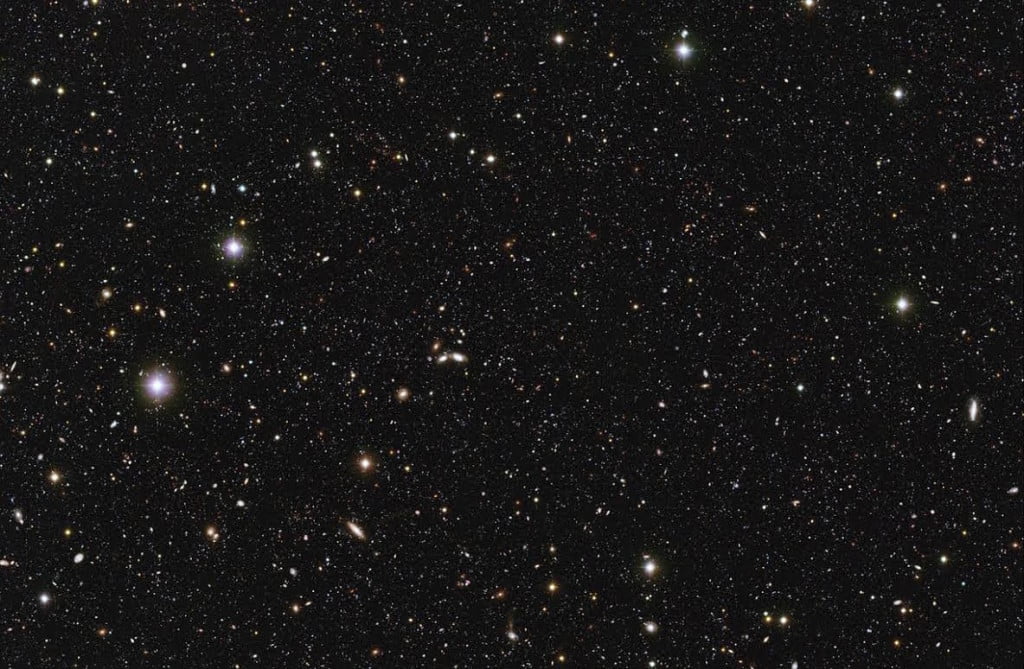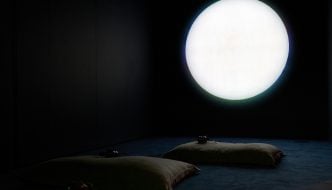Professor Lawrence Krauss on Space, Time, and Gravitational Waves @ Conway Hall
March 3, 2016
 Lawrence Krauss is Foundation Professor of the School of Earth and Space Exploration at Arizona State University and director of its Origins Project, as well as a prolific author and communicator of science. In his first public lecture since last month’s announcement of the detection of gravitational waves at the LIGO detector, Krauss spoke last night in London for the howto: academy on the topic of ‘Space, Time, and Gravitational Waves’. Christy Cooney went along.
Lawrence Krauss is Foundation Professor of the School of Earth and Space Exploration at Arizona State University and director of its Origins Project, as well as a prolific author and communicator of science. In his first public lecture since last month’s announcement of the detection of gravitational waves at the LIGO detector, Krauss spoke last night in London for the howto: academy on the topic of ‘Space, Time, and Gravitational Waves’. Christy Cooney went along.
Hold your hand at arms length above your head and consider the patch of sky captured by the nail of your little finger (happily enough, roughly one square degree). Then divide the area into 84 equal sections. Now get yourself some time on the Hubble Space Telescope and point it at one of those tiny sections for some few million seconds, gathering all the light that comes your way. You will get something like the image above.
Spend some time staring at this picture, reflecting on the fact that it contains a few thousand galaxies, maybe even a civilisation or two, and try to convince yourself anew that the cold, rational world of science has nothing to offer those in search of the numinous.
The beauty of images like this, or so says Lawrence Krauss, lies not the in the awesome power of the technology used to capture them (though there is that), but in how they inform our view of what our place in the universe might or might not be.
Speaking last night at Bloomsbury’s Conway Hall, whose humanist library and championing of secular humanism made it as fitting a setting as any university theatre, one of the world’s leading cosmologists expounded our current understanding of the cosmos, up to and including the recent observation of gravitational waves.
The observation was hard won, Krauss explained, and the technology that made it possible has not existed for more than a decade or so. Gravitational waves are ripples generated by the movement of mass through space-time, ripples that squeeze and stretch space-time as they move through it. The LIGO detectors comprise of laser beams bouncing back and forth between mirrors at opposite ends of a tunnel 4km long, a distance that would be measurably distorted were a gravitational wave to pass through.
The waves recently detected were generated by the merger, 1.3billion years ago, of two black holes, one of 29 solar masses, the other of 35. But the resultant black hole was of mass 62 times that of the sun, not 65. That means that in the 0.02 seconds required for the merger, three solar masses were emitted in the form of energy—more than was emitted over the same period by all the stars in the universe combined.
Yet detecting the resultant waves still required measuring a change in the distance travelled by those laser beams of 1/1000 the width of a proton. That’s so small the scientists had to account for the most infinitesimal sources of noise, from continental drift, to lorries hitting potholes a few miles away, to quantum mechanical movement in the surface of the mirrors. Two detectors were used—one in Washington, one in Louisiana—on the basis that if they detected the same signal amid all the noise, it was very likely a gravitational wave passing through the Earth.
Krauss’s attraction as a communicator lies not just in his ability to explain his subject in plain English, but also in his enthusiasm for the links between the physical and the metaphysical. This talk might be considered an addendum to his wonderful 2012 book A Universe from Nothing, a guide to the most current theories of how the universe came into being. Gravitational waves interact extremely weakly with matter, so provide an opportunity to see past a thus-far impermeable wall of radiation generated by the Big Bang known as the Cosmic Microwave Background, and to observe the first nano-, pico-, and femtoseconds of our universe’s existence.
As Krauss says, while much of the news making its way out of the United States at the moment might not show humanity at its most inquisitive, discoveries of this sort certainly do—these detectors are the gothic cathedrals of the 21st century, built to celebrate not God, but the natural universe, its origins, and the wonder that man knows.
@christycooney
Filed under: Written & Spoken Word
Tagged with: a universe from nothing, cern, conway hall, gravitational waves, howto: academy, lawrence krauss, ligo

Comments